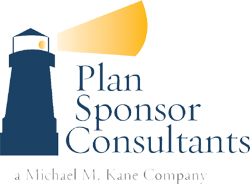
Discover top strategies for maintaining organized 401(k) fiduciary files with best practices for compliance and peace of mind.
As a plan sponsor, one of your primary responsibilities is ensuring that your company’s retirement plan operates smoothly and within the boundaries of compliance regulations. This is no small feat, especially when dealing with the complexities of a 401(k) plan. One of the ways to help enable hassle-free management is by maintaining neat and tidy records. This article will provide you with some practical tips and best practices on how to organize and document your fiduciary files.
Why Is Retirement Plan Documentation Important?
First, let’s delve into why retirement plan documentation is crucial. Proper documentation serves as evidence of your diligent fiduciary oversight. It helps to show that you are actively managing your company’s retirement plan in accordance with ERISA regulations. Moreover, it helps streamline the auditing process and makes it easier to answer inquiries from your plan’s third-party administrator (TPA).
Best Practices for Organizing Fiduciary Files
Now, let’s explore some of the best methods to keep your fiduciary files in order:
- Create a Fiduciary File System: Designate a secure location, preferably a locked file cabinet or encrypted digital storage space, for all plan-related documents. This includes the plan document, amendments, participant communications, government filings, and investment reviews.
Action item: Create a new master folder and label it “401(k) Plan”. Within this master folder, create subfolders with important categories such as, “Plan Document and Amendments”, “Participant Communications”, “Annual Filings”, and “Investment Reviews”. Ensure that relevant documents are correctly placed within their corresponding subfolders.
- Implement a Document Retention Policy: Develop a policy that outlines for how long different types of documents should be retained. For instance, the plan document and amendments should be kept permanently, while records related to plan operations should typically be kept for at least six years.
- Regularly Update Your Files: Make it a habit to update your files regularly. This includes adding new documents as they come in and removing outdated ones based on your retention policy.
- Use Clear Labeling and Categorization: Clearly label each document with its type and the date it was created or received. Categorize documents based on their nature, such as plan administration, investment management, participant records, and compliance tests.
Folder / File Name Examples
- Plan Document and Amendments / Plan Document-ABC Company-401k Plan-2010.docx
- Investment Reviews / Investment Review-ABC Company-401k Plan-Q1 2024.docx
- Participant Communications / Participant Education-ABC Company-401k Plan-Q1 2024.docx
- Ensure Accessibility While Maintaining Confidentiality: Balancing accessibility with confidentiality is vital when managing fiduciary files. The documents should be readily retrievable as needed, yet stored in a manner that protects sensitive data from unauthorized access. Implement safeguards such as password protection for sensitive documents and restrict access to authorized personnel only.
Let’s take the company’s census file as an example. This file holds sensitive information like Social Security numbers, dates of birth, salaries, 401(k) deferral amounts, employer match, and profit sharing calculations. This file should be safeguarded with a password and is only accessible to employees who require this information for their roles. For instance, a newly hired temporary employee would not have access to this file, ensuring the information remains confidential.
Reduce the Hassle of Compliance Testing
One of the many benefits of maintaining organized fiduciary files is how much easier it makes compliance testing. For example, your plan’s TPA usually asks for uploading census data by January 31st to run their compliance tests for the year.
By having clean data and organized files, this task becomes significantly less daunting. Instead of spending hours searching for and compiling the requested information, you can access it within a few clicks. This not only saves you valuable time, but it also helps ensure that your TPA has all the necessary information to perform accurate compliance tests.
Structure for Success
Maintaining a well-organized 401(k) is more than just a tidy system of records. It’s an outward sign of effective fiduciary oversight, accurate audits, and comprehensive compliance testing. As a plan sponsor, you play an important role in the smooth operation of your company’s retirement plan.
However, you don’t have to navigate this path alone. Partnering with an experienced 401(k) advisor can offer valuable assistance, provide answers to your questions, and help ensure you’re on the right track. Remember, the success of your 401(k) plan is not just about its performance but also about its organization and compliance. We are here to provide guidance, help you stay organized, and support the development of a bright financial future for your employees.



